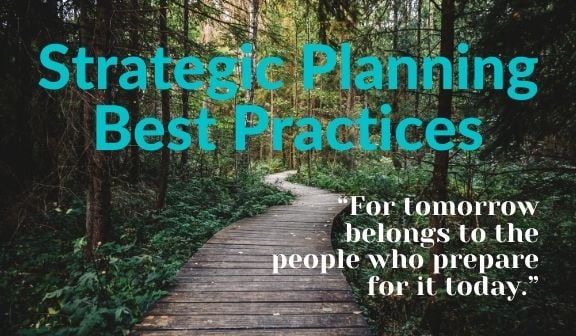At its core, thoughtful, regular strategic planning is essential to nonprofit organizations. Successful mission delivery and fulfillment, organizational growth and expansion, and a solid financial footing all depend on your organization’s commitment to establishing a shared vision for the future and identifying the specific strategies and action steps needed to realize that vision.
Together, our global family, experienced something we never could have imagined during the COVID-19 pandemic. And, with the Delta variant of the virus raging across our country and world, it’s hard to predict when the pandemic will be behind us.
We know most nonprofit organizations experienced some disruption caused by the pandemic, and in these times, the work of the social sector is even more critically important. Organizations serving the greater good must continue to clarify the purpose and aim of their work as well as planning for their futures.
In short, don’t let the pandemic be a reason for not going through the strategic planning process. Learn from it. Adjust your plans, but also be flexible in your approaches.
Lessons Learned during the Pandemic
Organizations and their leaders from every sector have had to pivot, be creative, and develop innovative strategies to continue doing their work since March 2020. When you think how hard it is to make change, consider how quickly we all have had to adapt during this time. New technologies were employed, many organizations reached far more constituents, and donors and volunteers who were already committed to our causes really stepped up to help keep the work going.
As organizations, we need to evaluate what worked well and what didn’t. We must all decide what changes should be carried forward in ways that allow us to more effectively and efficiently carryout our missions without sacrificing the quality of our work. We all had them – let’s lean into them!
Follow Proven Best Practices
Whether your organization is in the middle of a current strategic plan and just needs to make adjustments factoring in lessons learned from the pandemic, or you are considering when and how to launch your next strategic planning process – do it thoughtfully!
At JGA, our experience is that following best practices helps to create a plan that fits your organization’s culture, is measurable and achievable, and recommits your leaders and supporters to a common purpose and strategy.
Consider the following:
- Create a strategic planning committee of key staff and volunteer stakeholders.
- Assess the current state of your organization—including critical issues you face and a scan of the environment.
- Develop specific elements of the plan, including overarching goals, as well as objectives and tactics.
- Test elements of the plan with a broader audience to get external perspective and buy-in.
- Develop necessary supporting materials, such as budgets, tactical management tools, development plans, and other planning.
- Have the plan approved by the governing body of your organization.
When considering the effects of the pandemic and their impact on how your organization plans for the future, just remember the African Proverb, “For tomorrow belongs to the people who prepare for it today.”
![]()
